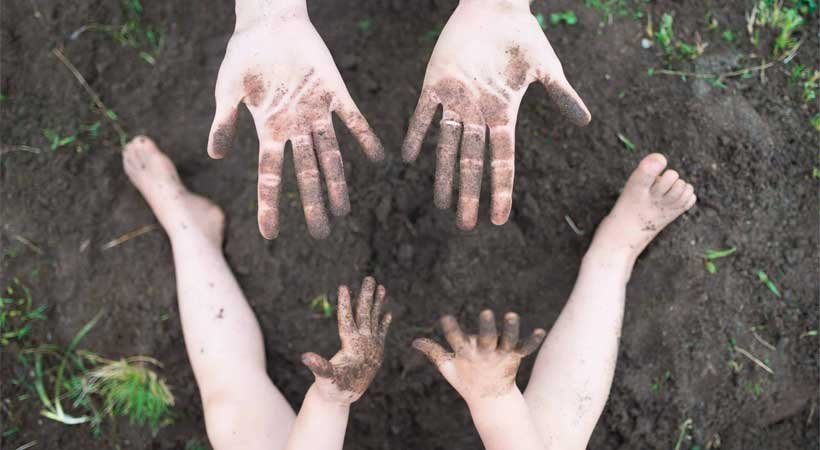
Communication
In the Castillo Morales® concept, communication is the starting point for every diagnosis or therapy.
In this concept communication is more than speech or language. It takes place, for example, also by touch, eye contact, facial expressions or bodily gestures. It is up to the therapist, even with the most severely handicapped patients, to find at all levels the most subtle methods of communication and hence ways for the patient to make her/himself understood.
For Castillo Morales emphasises
“if a human being cannot communicate with other people his soul will die“.
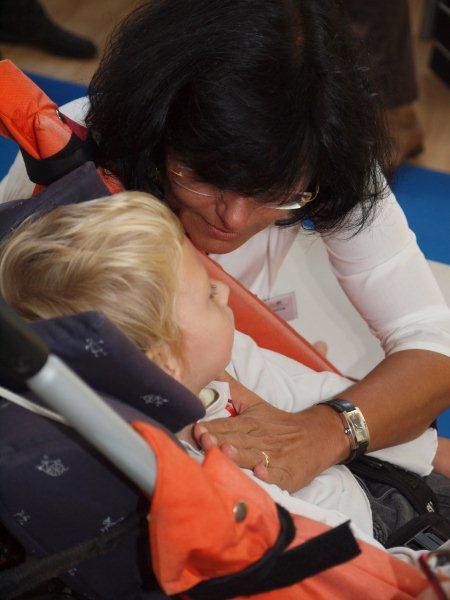
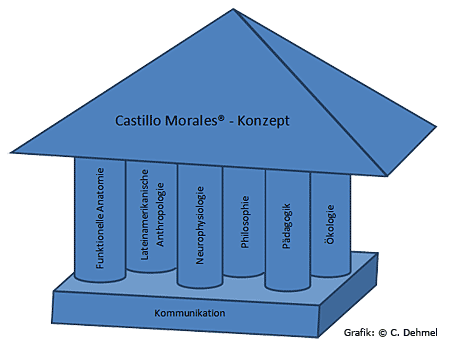
Components of the reference system:
- functional anatomy
- neurophysiology
- philosophy
- Latin American anthropology
- ecology and
- pedagogy
These terms are explained below.
Communication is the basis of these crucial aspects of the Castillo Morales® concept.
Philosophy
Philosophy in the Castillo Morales® concept is based on a humanistic picture of man that is crucial for communication between the doctor/therapist on the one hand and the patient /attachment figure on the other.
Both in his covert and overt attitude towards the patient /attachment figure the therapist/doctor meets her/him on an equal footing. There is no hierarchy and the therapeutic work is formed by respect and esteem.
Many aspects of this philosophy are connected with findings obtained from the anthropology of Latin America.
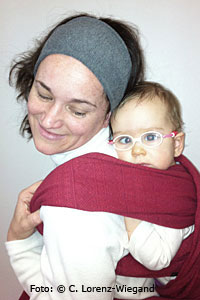
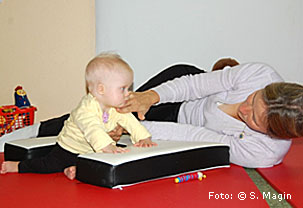
Neurophysiology
The Castillo Morales® concept has a neurophysiological basis. An advisory scientific committee meets regularly with the representatives of the instructional therapists to discuss intensively current scientific findings and as a result, as required, adapt the therapeutic methods.
On the basis of the specialist knowledge of the profession the therapeutic planning of the Castillo Morales® therapist is oriented above all to the findings regarding motor learning, posture and movement, sensory physiology and also the physiological activities of sucking, swallowing and chewing. It pursues the overriding goal of achieving for every patient as high a degree of autonomy as possible and the ability to participate in normal life.
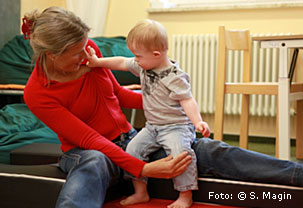
Functional anatomy
For their work the therapists need substantiated facts concerning the functional anatomy of human beings, in particular that connected with the orofacial complex. This function is described in close connection with the positions and movement of the entire body.
For example the interplay of diagonal muscle chains via two triangles reacting to each other is revealed. The apexes of the triangles meet dorsally in the thoracolumbar transition region and ventrally at the height of the navel.
The analysis of biomechanical interconnections for particular everyday activities also plays an important role. A good example of this is the frequent occurrence of shorter arms for people with trisomy 21. This results in an impaired support function of the arm and hence a hindrance in straightening the spine.
The connection between “form and function” is of great importance for diagnosis and therapy. For example, the movement and preferred position of the tongue influences the form of the palate as well as of the upper and lower jaw.
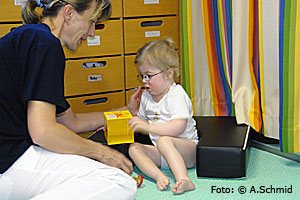
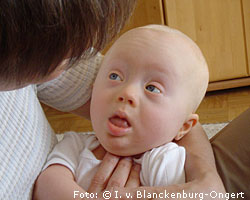
A particularly important part of the Castillo Morales® concept is the interaction between posture/position and movement of the orofacial complex and the body. A functional therapy always includes both aspects.
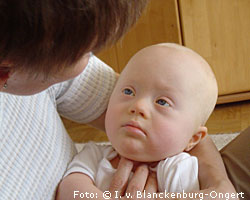
Latin American anthropology
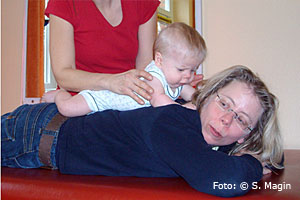
The Castillo Morales® concept integrates findings of social anthropology into the therapeutic planning and execution: Elements of the ways people from the various ethnic groups of Latin American are brought up and how they live together can be included with advantage in the therapy. The close bodily contact children have in their early years and the resulting self-confi dence and feeling of security can for example be found in the Castillo Morales® concept directly in the body-based work for supporting the sensorimotoric development.
Ecology
The ecological viewpoint (Greek Oikoslógos: interactions of organisms with their natural environment) in the Castillo Morales® concept considers the close connection between social relationships and the individual surroundings for the development of the individual.
Consequently, forming the spatial environment (e.g. light, possibilities of support, boundaries) plays just as great a role as integrating family members with their ideas, anxieties, wishes, etc., in order to offer an adequate therapeutic situation.
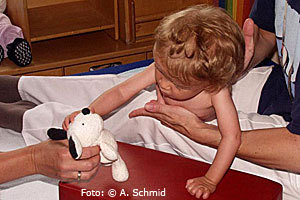
Pedagogy
The Castillo Morales® concept integrates pedagogic basics into the therapy. The therapeutic concept raises the question: what is the best way for the child / the adult to learn?
The patient’s abilities and skills are extended step-by-step. What the patient does himself during this process plays a critical role. The therapists create or adapt the surroundings, awaken motivation, provide adequate support and possibilities of imitation.
The more abilities the child / adult develops, the less help he needs from the therapist – according to the motto, “help me do it myself” (Montessori).
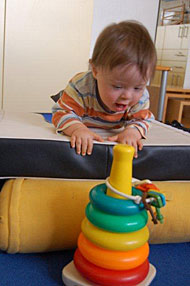
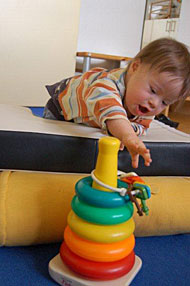
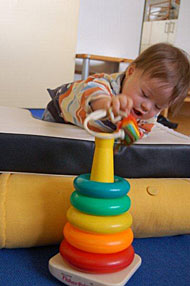
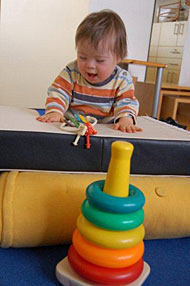
freu mich darüber“
The therapeutic process always takes place as a dialogue between the person concerned and the therapist, and requires from both sides a high level of attention and motivation.